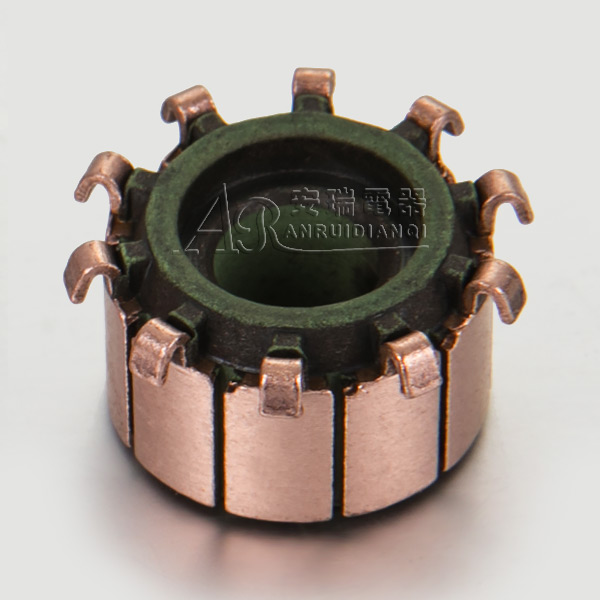

As a key component that can drive the smooth operation of the motor, the commutator naturally meets the needs of the motor through scientific technical scrutiny and fine design. At present, the motor is widely used in the market, and the commutator must also make different changes to meet the needs of more fields to improve work efficiency. Our factory has many types of commutators, but the basic principles of the commutator are common. So, today we will introduce the role and working principle of the motor commutator.
The commutator is a component of the DC permanent magnet series motor in order to allow the motor to continue to rotate.
Structurally, the commutator is composed of several contact pieces in a circle, which are connected to each tap on the rotor. The two electrodes on the outer side are called brushes, and only two of them are in contact.
The principle is that when the coil passes the current, it will be rotated by attraction and repulsion under the action of the permanent magnet. When it turns and balances with the magnet, the originally energized line corresponds to the contact piece on the commutator. The brushes are separated, and the brushes are connected to the corresponding contacts of the set of coils that generate the driving force, so that the DC motor will turn up when it is repeated continuously.
The wide application of electricity has promoted the full development of electricity in various fields and has adapted to the needs of various fields. As the simplest instrument for converting electricity into electric power, the motor has a precise design, and the design of each component is also very particular. Among them, the motor commutator plays a key role. Without it, the motor will not run smoothly. Next, let's take a look at the components of the DC motor commutator.
The components of the motor commutator:
1) The rotor rotates, the carbon brush does not move, and then the pair of contact pieces that contact each time are different, and then maintain him to continue to rotate.At the same time, one group of windings is energized in the forward direction, and the other group can be energized in the reverse direction to obtain higher Efficiency and power output.
(2) The carbon brush does not move due to the continuous movement of the rotor, so that when a group of coils of the rotor is now connected to the carbon brush to form a loop, because there is a magnetic field around the energized conductor, then he will turn, and this group will break after rotation Power up and then the next group will be powered up, so that it can keep running.
(3) If it is not installed, there is no commutation, then the current has always flowed through a winding, and the winding will not rotate after reaching the zero-crossing position.It cannot be turned at all and cannot be screwed. Always energized, because the resistance is very small, it will burn the rotor.
(4) Components Each group of windings has at least one pair of contact pieces. If it is a multi-winding motor, it may be possible for multiple windings to share one contact piece. The contact pieces are connected to the windings, and then there is a carbon brush on the top.
